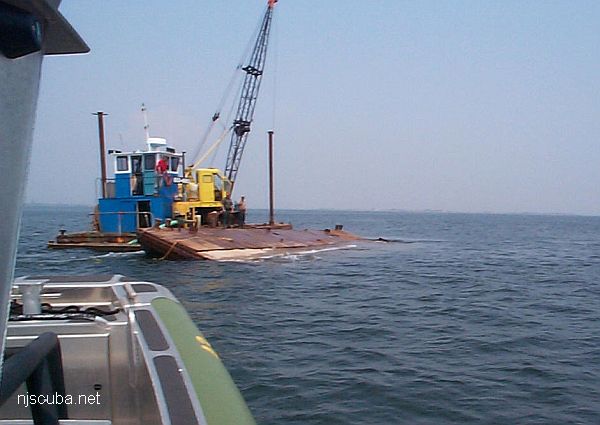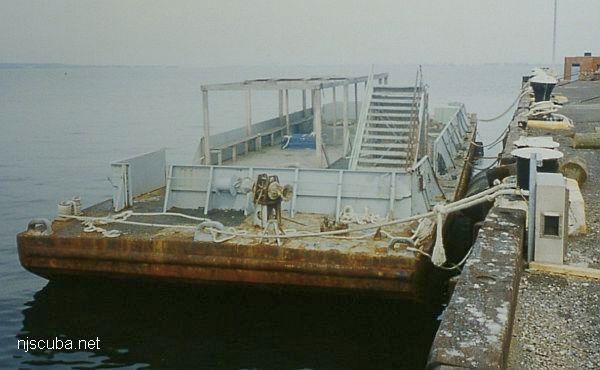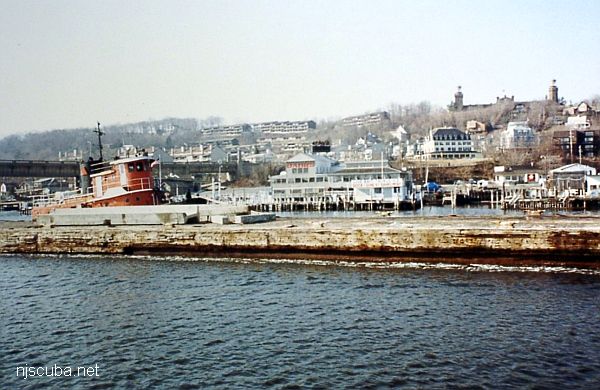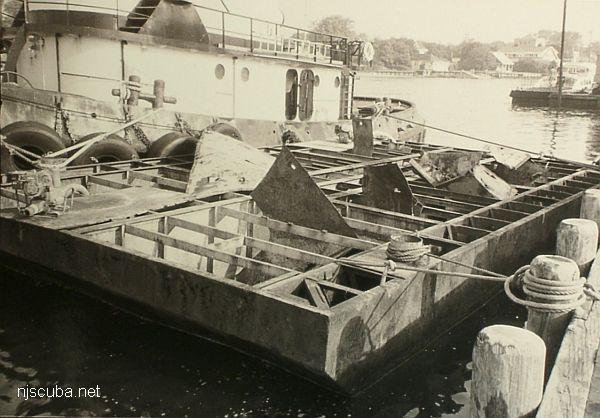
- Type:
- artificial reef, barges
- Depth:
- 25 - 40 ft
| Name | Description | Sunk | GPS |
| CorEW33 | 60 ft steel | 2004 | 40°37.994' -73°14.466' |
More: barges - Yellowbar Artificial Reef ...

A barge is a vessel that does not have its own means of propulsion ( usually. ) Barges are towed or pushed from place to place by tugboats, or anchored in place to serve as temporary work platforms, floating docks, or storage. Some barges are self-propelled, in a limited way. These are known as scows, and their limited propulsive power restricts them to protected waters without the assistance of a tugboat.
More: Barge ...

| Name | Description | Sunk | GPS |
| CorEW33 | 60 ft steel | 2004 | 40°37.994' -73°14.466' |
More: barges - Yellowbar Artificial Reef ...
The visibility on this site varies. Average is 10-12ft. This site offers two wrecks which lie in 25 fsw. A British WWI two-man reconnaissance submarine and an old wooden barge. They are both within swimming distance from each other. The marine life is fair around these wrecks. There are a few car tires between the two wrecks and you may find an occasional lobster hiding inside them.
To locate the barge take a compass heading of 330 degrees from the pilings located on the east side of Greenwich Ave. It takes about 50 kick cycles to reach the wreck. To get to the submarine take a compass heading of 30 degrees from the same pilings. This can be reached in about 30 kick cycles. Both of the wrecks are not intact but make for a good dive.
More: Bayville barge ...
I don't know the reason for this offshore barge's name, other than it might well be the real one. Nevertheless, this wood barge, sometimes called a drydock lies in 120+ of water and is usually a very good lobster dive, albeit a deeper one. Bottom visibility is often cloudy to poor. It's not the best bottom conditions here, but a careful and advanced certified diver can bring home a lot of lobsters for dinner with a dive here. This spot isn't frequently dived.
More: Blue Boy ...
This wreck got its name from the first few divers to get there, who struck it rich in lobsters in its wooden ribs and decking. The wreckage is very well spread out in several lines or walls, with decking off to one side. Near the bow, an overturned piece of decking is home to ling and blackfish. Off to the side lie the winch and small bits of machinery.
More: Bonanza ...
wooden
More: Brigantine Buoy Wreck ...

More: Captain Etzel ...

More: car float barge ...
More: Coleman barges ...

More: Coleman I ...